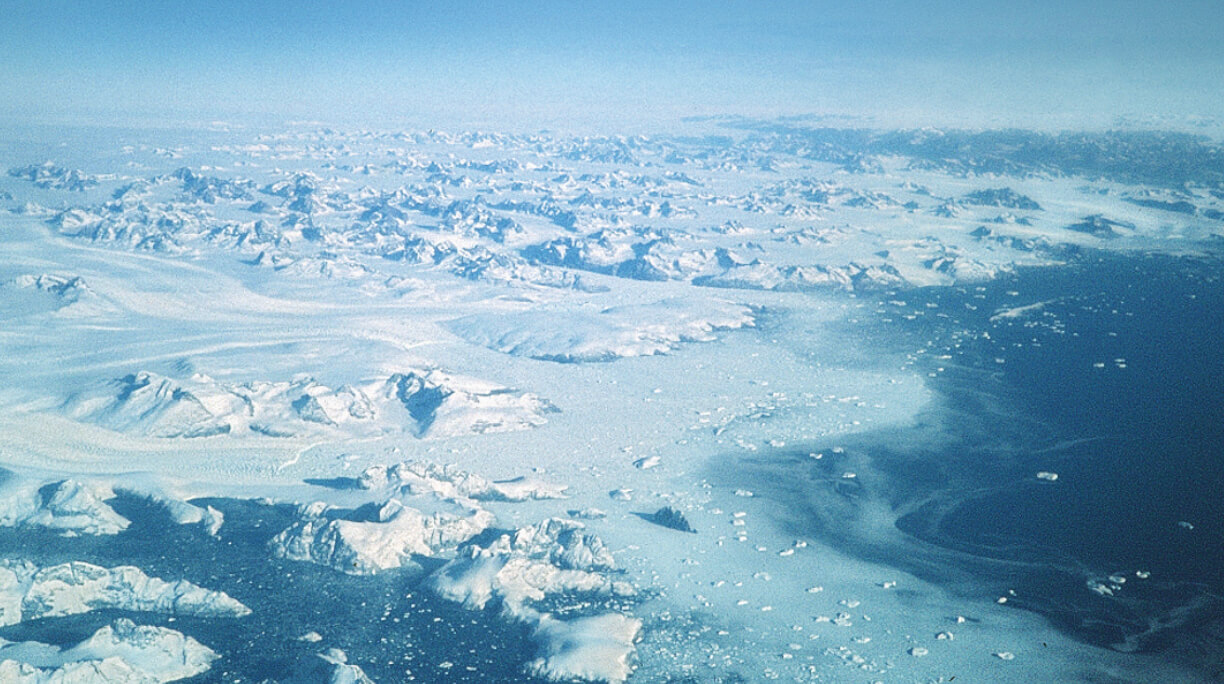
How to Cite
Share
Abstract
In the present-day western North Atlantic, icebergs can be observed off north-east Canada, drifting south along the coast in the cold Labrador Current. Normally they melt in the area off Newfoundland where they reach warmer waters. Most of these icebergs originate from calving glaciers in West Greenland or in the Canadian Arctic. Jakobshavn Isbræ in West Greenland (Fig. 1) deserves particular mention as it is the fastest known ice stream in the world draining 6–7% of the entire Greenland ice sheet (Joughin et al. 2004). Southward drifting icebergs also occur along the east coast of Greenland (Fig. 2), but most of these melt when they approach the southernmost tip of Greenland. The iceberg limit in the north-western Atlantic varies from year to year, but isolated icebergs may reach far south of Newfoundland (Fig. 1). Many icebergs carry a load of rock debris and soil incorporated by their parent glacier that leads to deposition of ice rafted debris on the deep ocean sea floor. In the past decade the Geological Survey of Denmark and Greenland (GEUS) has initiated marine geological investigations in the North Atlantic on the late Quaternary variability of North Atlantic thermohaline circulation, with special focus on the possible link between climate change and variations in deep-water flow intensity (Kuijpers et al. 1998, 2002, 2003). Moreover, glaciological projects in Greenland undertaken by GEUS have significantly contributed to the current debate of present-day climatic warming. Notably work carried out in East Greenland fjords has provided crucial information relevant for the study of glacial iceberg surges in the North Atlantic (Reeh et al. 1999). These surges are suggested to have been triggered under the influence of extreme cold climate conditions, but the actual trigger mechanism involved has been a matter of much debate. Evidence from modern glacier process studies referred to above, combined with results of recent studies in the North Atlantic carried out by GEUS and partner institutions, has provided new insights into the possible trigger mechanism of these massive glacial iceberg surges. These new findings have great significance for the current climate debate, since they strongly suggest that ongoing ocean warming can trigger a sudden, massive break-up of ice shelves. Such processes may already be in progress in the Arctic (e.g. Vincent et al. 2004), where rapid ice-shelf disruption on the margin of the Canadian Arctic Ocean has been reported to be the result of significant warming over the past few decades. During this period intensified inflow of Atlantic water to the Eurasian sector of the Arctic has been noted. It is evident that for Antarctic ice shelves large-scale disruption and break-up may lead to significant destabilisation of the Antarctic ice sheet with the serious risk of a sudden, drastic sea-level rise.
How to Cite
Share
Downloads
Editors: Martin Sønderholm & A.K. Higgins
The Review of Survey activities presents a selection of 18 papers reflecting the wide spectrum of activities of the Geological Survey of Denmark and Greenland, from the microbial to the plate tectonic level.
Activities in Denmark: The Survey's activities in Denmark are documented by 11 papers. The main themes [...]










